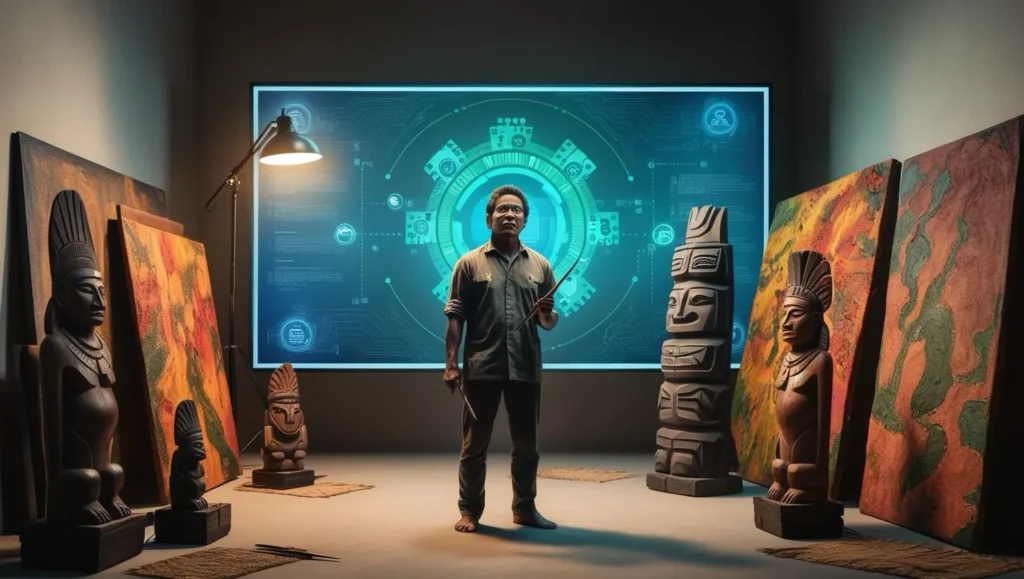Yes, digital art can become a compelling force to resist digital colonialism. While digital colonialism perpetuates historical structures of domination, marginalizing non-Western voices and cultures, digital art offers creative opportunities to question and subvert these dynamics.
Resisting Digital Colonialism Through Art
Reusing Colonial Archives
Artists from historically colonized regions, such as Southeast Asia, are repurposing colonial archives, using digital manipulation to reinterpret and reclaim their narratives. This practice destabilizes traditional notions of authenticity, originality, and control, transforming oppressive archives into instruments of critical expression and decolonization.
Creating Inclusive Digital Spaces
Digital environments provide unique opportunities to create more interactive, accessible, and democratic artistic experiences. By utilizing immersive technologies such as virtual reality, artists can construct virtual spaces that represent a diversity of cultural expressions, challenging the dominance of Western narratives.
Decentralizing Technological Control
The concept of “digital disruption” advocates for collaboration among peripheral communities to develop artistic practices aligned with local contexts. This approach not only fosters cultural empathy but also decentralizes technological power, offering alternatives to the Global North’s control over digital platforms.
Questioning the Neutrality of Technology
Digital art can expose the ideologies and power structures embedded in the technologies we use. By revealing how colonialism and racism are reproduced in digital spaces, artists challenge the notion that technology is neutral, highlighting its cultural and political biases.
Creating Alternative Narratives
Through digital art, artists have the opportunity to amplify marginalized stories and perspectives, challenging Western hegemonic narratives. Works that highlight the connection between technology and colonialism bring attention to inequalities reproduced both online and offline, offering much-needed counter-narratives.
Promoting Critical Digital Literacy
Digital art can help develop a critical understanding of how algorithms and data infrastructures impact society. Through educational tools, students and researchers can engage with colonial art histories, questioning how these epistemologies continue to shape the present.
Digital Art: Post-Internet and Post-Digital
It is essential to emphasize that the concept of “post-internet” does not refer to a time “after” the internet but to a critical awareness of the networks that shape artworks, from their conception to their dissemination. Meanwhile, “post-digital” describes the paradoxical condition where art transcends the focus on the digital, concentrating more on the human implications of technology use.
The Challenges of Digital Colonialism
Despite its transformative potential, digital art still faces challenges imposed by digital colonialism. The control of digital ecosystems by multinational corporations from the Global North results in economic and cultural domination, marginalizing local artists and limiting their access to global visibility. Furthermore, “attention colonialism” manipulates cultural habits, replacing traditional practices with digital distraction dynamics that serve corporate interests.
Conclusion
While digital art is often created within ecosystems dominated by large corporations, it can also become a subversive force, questioning power structures and creating new spaces for expression. By promoting alternative narratives, fostering critical digital literacy, and decentralizing technological control, digital art has the potential to resist digital colonialism, helping to build a more inclusive and equitable future in the virtual space.
Victor T. Murari
Art History, Education & Artificial Intelligence | PhD | Advancing Educational and Cultural Narratives through AI Integration

